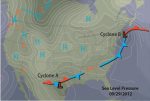
How Do Mid-Latitude Cyclones Move and Evolve?
ONCE FORMED, MID-LATITUDE CYCLONES migrate across the surface and commonly evolve through a series of steps, due to the way that winds circulate around the area of low pressure. Circulation around the cyclone will steer the trailing fronts in a counterclockwise direction (in the Northern Hemisphere), while west-to-east motion of the westerlies and Rossby waves […]

Where Do Mid-Latitude Cyclones Form and Cross North America?
WEATHER FRONTS generally do not exist in isolation, but typically form, migrate, and fade away as part of a larger system called a mid-latitude cyclone. Cold and warm fronts usually trail from a central core of low pressure — a cyclone. While popular culture uses the term “cyclone” to refer to a tornado or other […]

How Does Air Circulate Aloft over the Mid-Latitudes?
SURFACE WINDS IN THE MID-LATITUDES are generally from west to east in both hemispheres, but the pattern of air movement is less well developed higher in the troposphere. The main features are two currents of fastmoving air — jet streams — that encircle the globe near the boundaries of the mid-latitudes. What factors determine the […]
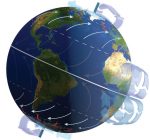
How Does Surface Air Circulate in Mid-Latitudes?
THE MID-LATITUDES are regions, in the Northern Hemisphere and Southern Hemisphere, that lie between the tropics (23.5°) and polar circles (66.5°). Air circulation in the mid-latitudes is driven by pressures set up by circulation in the adjacent tropics and polar regions, and by the Coriolis effect. Surface winds within most of the mid-atitudes blow from […]
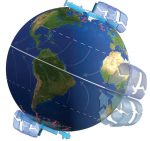
How Does Air Circulate in High Latitudes?
POLAR REGIONS RECEIVE LITTLE INSOLATION compared to the rest of Earth. As a result, the poles are very cold places, which experience winter darkness for months at a time. Air circulation around the poles reflects this relative lack of solar heating and also the proximity to the axis of rotation for the planet. The encroachment […]

What Do Latitude and Longitude Indicate?
IMAGINE TRYING TO DESCRIBE the location of an “X” on a featureless sphere. What system would you devise to convey the location? If the sphere did not have any markings or seams, we would need to first establish a frame of reference — a place on the sphere from which to reference the location of […]

Exploitation of the Low-Latitude Rainforest Ecosystem
Many of the world's equatorial and tropical regions are home to the rainforest ecosystem. This ecosystem is perhaps the most diverse on Earth, possessing more species of plants and animals than any other. Very large tracts of rainforest still exist in South America, south Asia, and some parts of Africa. Ecologists regard this ecosystem as a genetic reservoir of many species […]

High-Latitude Climates (Group III)
By and large, the high-latitude climates are climates of the northern hemisphere, occupying the northern subarctic and arctic latitude zones. But they also extend southward into the midlatitude zone as far south as about the 47th parallel in eastern North America and eastern Asia. One of these, the ice sheet climate, is present in both hemispheres in the polar zones. The […]
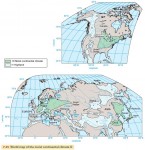
Midlatitude Climates (Group II)
The midlatitude climates almost fully occupy the land areas of the midlatitude zone and a large proportion of the subtropical latitude zone. They also extend into the subarctic latitude zone, along the western fringe of Europe, reaching to the 60th parallel. Unlike the lowlatitude climates, which are about equally distributed between northern and southern hemispheres, nearly all of the midlatitude climate area […]
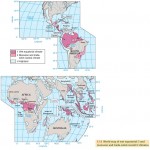
Low-Latitude Climates (Group I)
The low-latitude climates lie for the most part between the Tropics of Cancer and Capricorn, occupying all of the equatorial zone (10° N to 10° S), most of the tropical zone (10–15° N and S), and part of the subtropical zone. The low-latitude climate regions include the equatorial trough of the intertropical convergence zone (ITCZ), the belt of tropical easterlies (northeast and […]
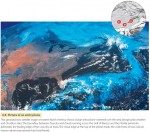
Midlatitude Anticyclones and Cyclones
Air masses are set in motion by wind systems—typically, masses of air moving in a spiral. Air can spiral inward and converge in a cyclone, or spiral outward and diverge in an anticyclone. Most types of cyclones and anticyclones are large features spanning hundreds to thousands of kilometers that move slowly across the Earth's surface, bringing changes in the weather as […]
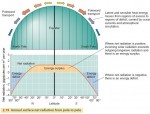
Net Radiation, Latitude, and the Energy Balance
Although the energy budgets of the Earth's surface and atmosphere are in balance overall, their budgets do not have to balance at each particular place on the Earth, nor do they have to balance at all times. At night, for example, there is no incoming radiation from the Sun, yet the Earth's surface and atmosphere still emit out going radiation. Net […]

latitude and longitude
LATITUDE AND LONGITUDE are points on lines that graph the Earth and allow cartographers and others, by assigning measurements to the lines, to fix the location of any place. Latitude lines run east and west and are also called parallels; longitude lines run north and south and are known as meridians. The measurements for both […]